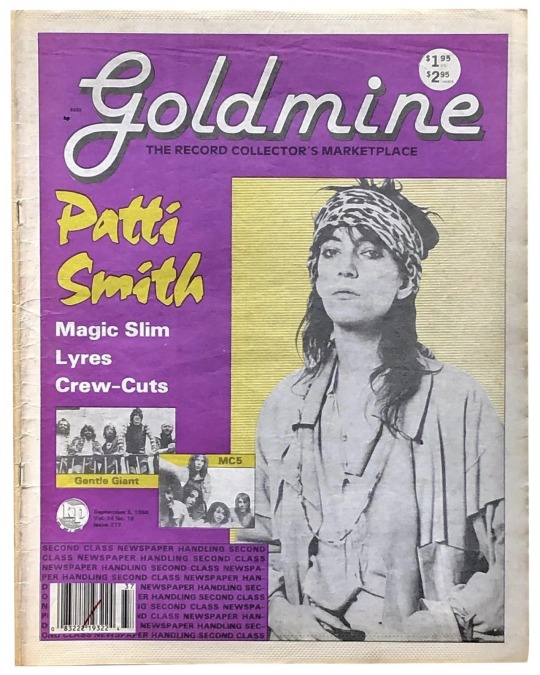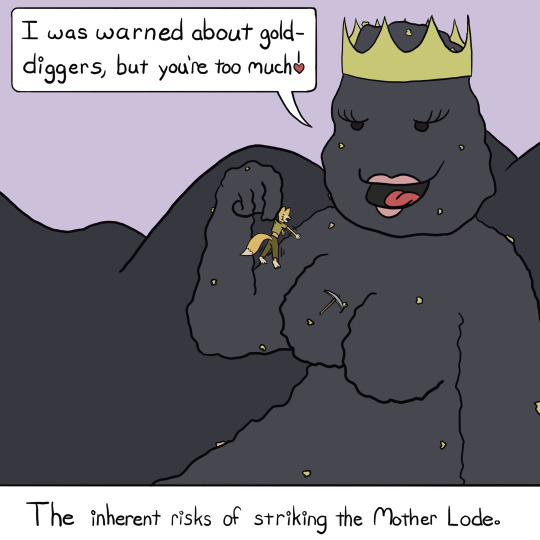#goldmine
Text

129 notes
·
View notes
Text










✨☁️🪐
#ewan mitchell#golden era#goldmine#prince aemond#house of the dragon#aemond the kinslayer#aemond targaryen#fanart#aesthetic icons
173 notes
·
View notes
Text



All the toys
Superpit goldmine, Kalgoorlie
On my travels
#original photographers#nature photography#landscape photography#goldmine#Superpit#dumptrucks#Kalgoorlie#on my travels
21 notes
·
View notes
Text
NOTE TO SELF:
canopy sounds like "can 'o' pee"
figure out a way to make money off of this
5 notes
·
View notes
Text

9 notes
·
View notes
Text
i still see your face



pairing: melami goldmine x gn!reader
summary: even after melami's death, you could swear you still saw her face when passing by clothing stores...

even after her death, you could still see your girlfriend's face, in the reflections of shop fronts at the mall. those same shops she used to love so much and where she'd always drag you to buy new clothes.
even now, you still find yourself stopping and glancing inside the store, examining the clothes the mannequins wore. and you always wondered if melami would like those outfits they wore too. you couldn't help but see her face instead of those empty mannequin faces, as you imagined how she'd look in those clothes.
but you knew it wasn't her. deep down, you knew you were just imagining things. that grief was making you see melami, when she was already gone…

#master detective archives#master detective archives raincode#master detective archives: rain code#master detective archives rain code#master detective archives: raincode#master detective archives x reader#melami goldmine x reader#melami x reader#melami#goldmine#goldmine x reader#x reader#drabble#oneshot#angst#hurt#death#mda#x you#x y/n#x gn reader#mdarc spoilers#mdarc
13 notes
·
View notes
Text
youtube
3 notes
·
View notes
Text

Find the mountain of your dreams below:
https://autumnalfoxfire.com/2024/03/10/fools-gold/
#animal#art#blog#comedy#comic#crown#digital#drawing#funny#giant#gold#goldmine#goldminer#humor#humour#krita#love#mine#mining#mountain#pick#pickaxe#pun
2 notes
·
View notes
Text

WG: “They built New Holland on an abandoned gold mine..”
T: “I heard it was a cemetery.”
WG: “That’s where they bury the miners.”
N: “It’s the wind mill that does it. Turning and turning the air until the sky itself rages against the night.”
WG: “No. Cemetery, definitely.”
#frankenweenie#2012#newhollandelementary#newholland#elementary school#elementary#timburton#nassorkarloff#Nassor#Toshiaki#weirdgirl#Cynthia#goldmine#cemetery#windmill#school#classroom#class#martinshort#timburtonmovies#timburtonmovie#catherineohara#Halloween#spookyseason#story time#stories#story#spooky#history#students
26 notes
·
View notes
Link

by Patrick Prince | Feb 7, 2020
Goldmine® Grading Guide is now the most widely used guide for the buying and selling of vinyl albums; many eBay auctions and stand-alone Web sites swear by it.
Nothing is more important in determining the value of your records than their condition! Yes, their relative rarity and demand is important, but a collector or dealer will pay much more for a record in Near Mint condition than one in Very Good Minus condition.
However, I’ve found that most people with collections or accumulations have an inflated sense of the condition of their discs. I don’t know how many times I’ve heard people who think they know what they are talking about tell me, “My records are all Mint!” Sure, and I’ve got some oceanfront property in Arizona to sell you.
The truth is that most records, especially from before the 1970s, are not in anything close to Mint or Near Mint condition. That is why a collector will pay a premium for such a disc if he or she has to have it.
This book lists values for records in Near Mint condition. Records in lesser condition are worth a fraction of the Near Mint prices.
For most collectors, Very Good is the lowest grade for which they will pay more than bargain-bin prices. And some won’t even do that. Lower-grade records are only good as place holders, until a better copy comes along, or as examples of truly rare records that are difficult to find in any condition.
Most of the time, LPs are sold with two grades, one for the record and one for the cover. We list only one grade, however, because with some exceptions, albums without covers are worthless, and covers without the accompanying record are worthless. If an album is graded VG for the cover and VG+ for the record, add the two values together and divide by 2 to get a rough estimate of the value of a “mixed grade” LP.
Most records are graded visually. This is because most record dealers have lots of records — hundreds of thousands in some cases — and they don’t have the time to play their entire stock. That said, some defects are easy to see, such as scratches and warps. Others are subtle, such as groove wear from using a cheap or poorly aligned tone arm. It has been our experience that older LPs (1950s to about 1971) tend to play better than they look, and newer LPs (at least until 1989) tend to play worse than they look.
When grading your records, do so under a strong light. Look at everything carefully, and then assign a grade based on your overall observations.
Some records will be worthy of a higher grade except for defects such as writing, tape or minor seam splits. Always mention these when selling a record! For some collectors, they will be irrelevant, but for others, they will be a deal-breaker. For all, they are important to know.
Also, some LPs were made for promotional purposes only. Again, always mention if a record is a promo copy when advertising it for sale!
One of the obstacles to the further growth of record collecting is poor grading and a lack of consensus as to what constitutes a “Very Good Plus” or “Near Mint” record or cover. Over the years, the Goldmine® Grading Guide has tried to standardize this. It is now the most widely used guide for the buying and selling of vinyl albums; many eBay auctions and stand-alone Web sites swear by it. But we recognize that there are many variables to grading a record. As a seller, you are better off grading conservatively and surprising the buyer with a better record than was expected, than by grading based on wishful thinking g and losing a customer.
That said, here are the standard grades for record albums, from best to worst.
MINT (M)
These are absolutely perfect in every way. Often rumored but rarely seen, Mint should never be used as a grade unless more than one person agrees that the record or sleeve truly is in this condition. There is no set percentage of the Near Mint value these can bring; it is best negotiated between buyer and seller.
NEAR MINT (NM OR M-)
A good description of a NM record is “it looks like it just came from a retail store and it was opened for the first time.” In other words, it’s nearly perfect. Many dealers won’t use a grade higher than this, implying (perhaps correctly) that no record or sleeve is ever truly perfect.
NM records are shiny, with no visible defects. Writing, stickers or other markings cannot appear on the label, nor can any “spindle marks” from someone trying to blindly put the record on the turntable. Major factory defects also must be absent; a record and label obviously pressed off center is not Near Mint. If played, it will do so with no surface noise. (NM records don’t have to be “never played”; a record used on an excellent turntable can remain NM after many plays if the disc is properly cared for.)
NM covers are free of creases, ring wear and seam splits of any kind.
NOTE: These are high standards, and they are not on a sliding scale. A record or sleeve from the 1950s must meet the same standards as one from the 1990s or 2000s to be Near Mint! It’s estimated that no more than 2 to 4 percent of all records remaining from the 1950s and 1960s are truly Near Mint. This is why they fetch such high prices, even for more common items.
Don’t assume your records are Near Mint. They must meet these standards to qualify!
VERY GOOD PLUS (VG+) or EXCELLENT (E)
A good description of a VG+ record is “except for a couple minor things, this would be Near Mint.” Most collectors, especially those who want to play their records, will be happy with a VG+ record, especially if it toward the high end of the grade (sometimes called VG++ or E+).
VG+ records may show some slight signs of wear, including light scuffs or very light scratches that do not affect the listening experience. Slight warps that do not affect the sound are OK. Minor signs of handling are OK, too, such as telltale marks around the center hole, but repeated playing has not misshapen the hole. There may be some very light ring wear or discoloration, but it should be barely noticeable.
VG+ covers should have only minor wear. A VG+ cover might have some very minor seam wear or a split (less than one inch long) at the bottom, the most vulnerable location. Also, a VG+ cover may have some defacing, such as a cut-out marking. Covers with cut-out markings can never be considered Near Mint.
Very Good (VG)
Many of the imperfections found on a VG+ record are more obvious on a VG record. That said, VG records — which usually sell for no more than 25 percent of a NM record — are among the biggest bargains in record collecting, because most of the “big money” goes for more perfect copies. For many listeners, a VG record or sleeve will be worth the money.
VG records have more obvious flaws than their counterparts in better shape. They lack most of the original gloss found on factory-fresh records. Groove wear is evident on sight, as are light scratches deep enough to feel with a fingernail. When played, a VG record has surface noise, and some scratches may be audible, especially in soft passages and during a song’s intro and ending. But the noise will not overpower the music otherwise.
Minor writing, tape or a sticker can detract from the label. Many collectors who have jukeboxes will use VG records in them and not think twice. They remain a fine listening experience, just not the same as if it were in better shape.
VG covers will have many signs of human handling. Ring wear in the middle or along the edges of the cover where the edge of a record would reside, is obvious, though not overwhelming. Some more creases might be visible. Seam splitting will be more obvious; it may appear on all three sides, though it won’t be obvious upon looking. Someone might have written or it or stamped a price tag on it, too.
Good (G), Good Plus (G+), or Very Good Minus (VG–)
These records go for 10 to 15 percent of the Near Mint value, if you are lucky.
Good does not mean bad! The record still plays through without skipping, so it can serve as filler until something better comes along. But it has significant surface noise and groove wear, and the label is worn, with significant ring wear, heavy writing, or obvious damage caused by someone trying to remove tape or stickers and failing miserably. A Good to VG– cover has ring wear to the point of distraction, has seam splits obvious on sight and may have even heavier writing, such as, for example, huge radio station letters written across the front to deter theft.
If the item is common, it’s probably better to pass it up. But if you’ve been seeking it for a long time, get it cheap and look to upgrade.
POOR (P) and Fair (F)
Poor (P) and Fair (F) records go for 0 to 5 percent of the Near Mint value, if they go at all. More likely, they end up going in the trash. Records are cracked, impossibly warped, or skip and/or repeat when an attempt is made to play them. Covers are so heavily damaged that you almost want to cry.
Only the most outrageously rare items ever sell for more than a few cents in this condition — again, if they sell at all.
Sealed Albums
Still-sealed albums can — and do — bring even higher prices than listed.
However, one must be careful when paying a premium for sealed LPs of any kind for several reasons:
1. They may have been re-sealed;
2. The records might not be in Near Mint condition;
3. The record inside might not be the original pressing or the most desirable pressing;
4. Most bizarre of all, the wrong record might be inside. I’ve had this happen to me; I opened a sealed album by one MCA artist only to find a record by a different MCA artist inside! Fortunately, I didn’t pay a lot for that sealed LP. I would have been quite upset if I had!
Imports
The Goldmine® Record Album Price Guide lists only those vinyl LPs manufactured in the United States or, in a few instances, manufactured in other countries, but specifically for release in the United States. Any record that fits the following criteria is an import, and you won’t find it in the price guide:
LPs on the Parlophone label by any artist, at least before 2000. Parlophone, best known as the Beatles’ British label, was not used as a label in the United States until very recently.
LPs that have the letters “BIEM,” “GEMA” or “MAPL” on them.
LPs that say anywhere on the label or cover, “Made in Canada,” “Made in the UK,” “Made in Germany,” etc.
We have chosen not to list records from Great Britain, Canada, Japan or any other nation for logistical reasons. Where do you start, and where do you stop?
Unfortunately, we realize that there is a lack of reliable information on the value of non-U.S. records, especially published in the United States. Please don’t contact us seeking information on non-U.S. records; we cannot help.
Also unfortunately, there are few general rules about the value of an import as compared to an American edition.
Some import albums, especially well-made Japanese imports that still have their “obi strip,” can go for more than the U.S. counterpart. Others seem to attract little interest in the States.
One rule is just as true of imports as it is with U.S. records: Those discs that are originals in the best condition will sell for more than reissues and those in less than top-notch shape.
Promotional Copies
Basically, a promotional record is any copy of a record not meant for retail sale. Different labels identify these in different ways: The most common method on LPs is to use a white label instead of the regular-color label and/or to add words such as the following:
“Demonstration — Not for Sale”
“Audition Record”
“For Radio-TV Use Only”
“Promotional Copy”
Some labels, of course, used colors other than white; still others used the same labels as their stock copies, but added a promotional disclaimer to the label.
Most promotional albums have the same catalog number as the regular release, except for those differences.
Sometimes, regular stock copies have a “Demonstration — Not for Sale” or “Promo” rubber stamped on the cover; these are known as “designate promos” and are not of the same cachet as true promotional records. Treat these as stock copies that have been defaced. Exceptions are noted in the listings.
All of this is mentioned as a means of identification. As a rule, we do not list promotional records separately, nor are we interested in doing so. There are exceptions, which we will list below. But we feel that the precious space in our guides is better used for unique commercially available records rather than for thousands upon thousands of promotional copies.
Most promotional LPs sell for approximately the same as a stock copy of the same catalog number. That has been our experience.
However, there are certain exceptions. Those are the kinds of promos that you’ll find documented in our price guide, and which we plan to continue to document. These include:
Colored vinyl promos.
Promos in special numbering series, such as Columbia albums with an “AS” or “CAS” prefix; Warner Bros, albums with a “PRO” or “PRO-A-” prefix; Capitol albums with a “PRO” or “SPRO” prefix; Mercury albums with an “MK” prefix; and other similar series on other labels.
Promos that are somehow different than the released versions, either because of changes in the cover or changes in the music between the promo LP and the regular-stock LP.
Promos pressed on special high-quality vinyl; these were popular in the 1980s and can bring a premium above stock copies of the same titles.
#audiophile#goldmine#goldmine grading guide#music#record collecting#record grading#record memorabilia#records#vinyl
9 notes
·
View notes
Text
If only Jesus knew that the sins he died for were doing butt stuff and smoking weed 🤣👏🏼
#just shower thoughts#thinking out loud#420stoner#420life#funny quotes#jesusistheway#im amazing#spilled ink#words or whatever#legendary thoughts#goldmine
15 notes
·
View notes
Text

Need so much gold on my neck my neck break
#chain#chains#chain necklace#gold#goldchain#gold price#goldmine#necklace#ice#Rolex#watch#jewlery#rappers#hiphop
8 notes
·
View notes
Note
Honestly I first put on NCIS as background noise while writing but I got distracted by it and was immediately addicted to it. Highly recommend if you're looking for something to binge.
i’ve been putting monk on in the background lately while i pack so maybe i’m about to enter my crime dramedy era…
#i’m srs i’ll probably start this soon#because i love the idea of a hurt tiny becoming part of the team and being extra observant and smart etc etc#also the angst scenarios… kidnapped tinies…#goldmine#asks
3 notes
·
View notes



